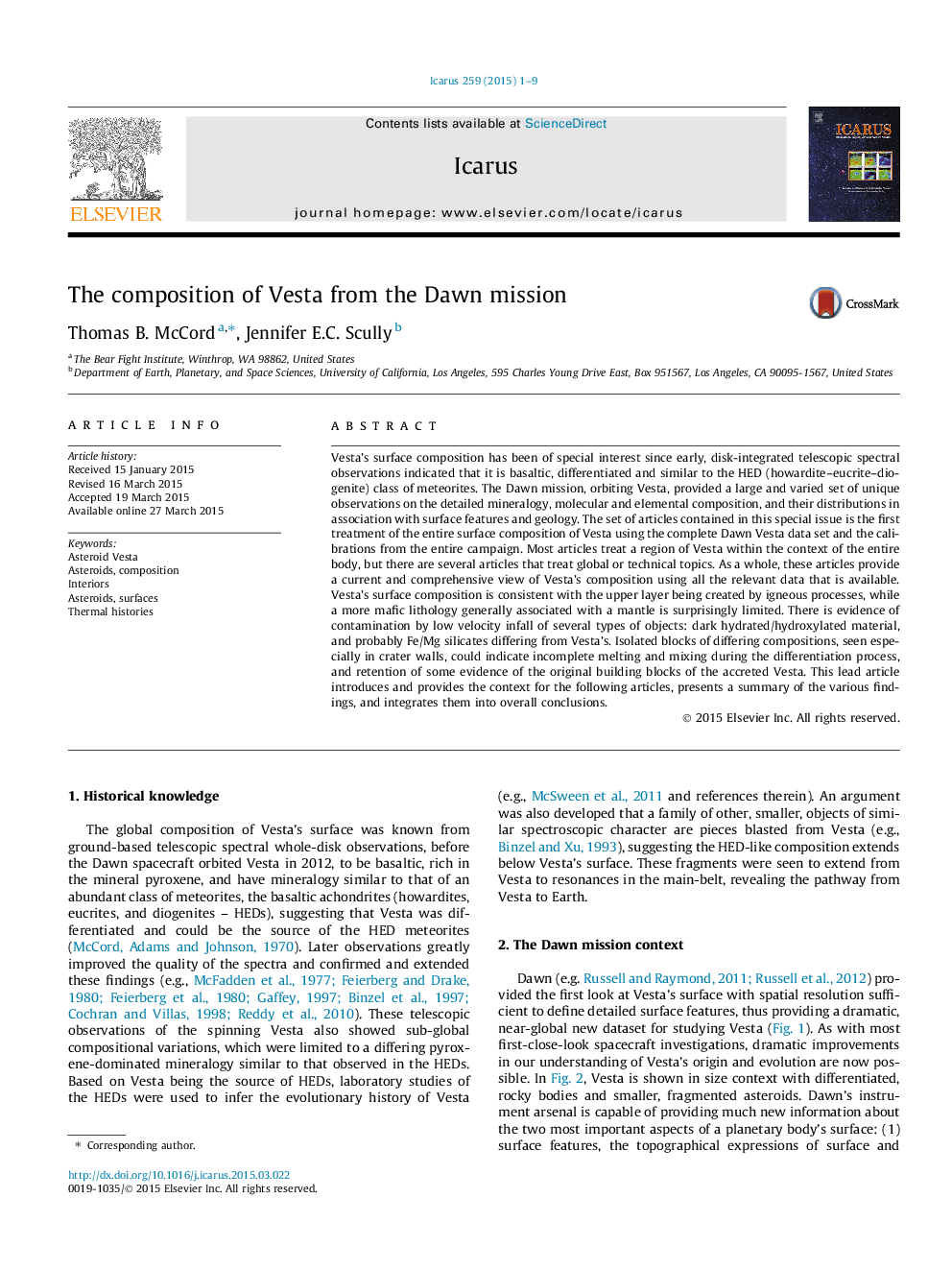| Article ID | Journal | Published Year | Pages | File Type |
|---|---|---|---|---|
| 8136029 | Icarus | 2015 | 9 Pages |
Abstract
Vesta's surface composition has been of special interest since early, disk-integrated telescopic spectral observations indicated that it is basaltic, differentiated and similar to the HED (howardite-eucrite-diogenite) class of meteorites. The Dawn mission, orbiting Vesta, provided a large and varied set of unique observations on the detailed mineralogy, molecular and elemental composition, and their distributions in association with surface features and geology. The set of articles contained in this special issue is the first treatment of the entire surface composition of Vesta using the complete Dawn Vesta data set and the calibrations from the entire campaign. Most articles treat a region of Vesta within the context of the entire body, but there are several articles that treat global or technical topics. As a whole, these articles provide a current and comprehensive view of Vesta's composition using all the relevant data that is available. Vesta's surface composition is consistent with the upper layer being created by igneous processes, while a more mafic lithology generally associated with a mantle is surprisingly limited. There is evidence of contamination by low velocity infall of several types of objects: dark hydrated/hydroxylated material, and probably Fe/Mg silicates differing from Vesta's. Isolated blocks of differing compositions, seen especially in crater walls, could indicate incomplete melting and mixing during the differentiation process, and retention of some evidence of the original building blocks of the accreted Vesta. This lead article introduces and provides the context for the following articles, presents a summary of the various findings, and integrates them into overall conclusions.
Related Topics
Physical Sciences and Engineering
Earth and Planetary Sciences
Space and Planetary Science
Authors
Thomas B. McCord, Jennifer E.C. Scully,
